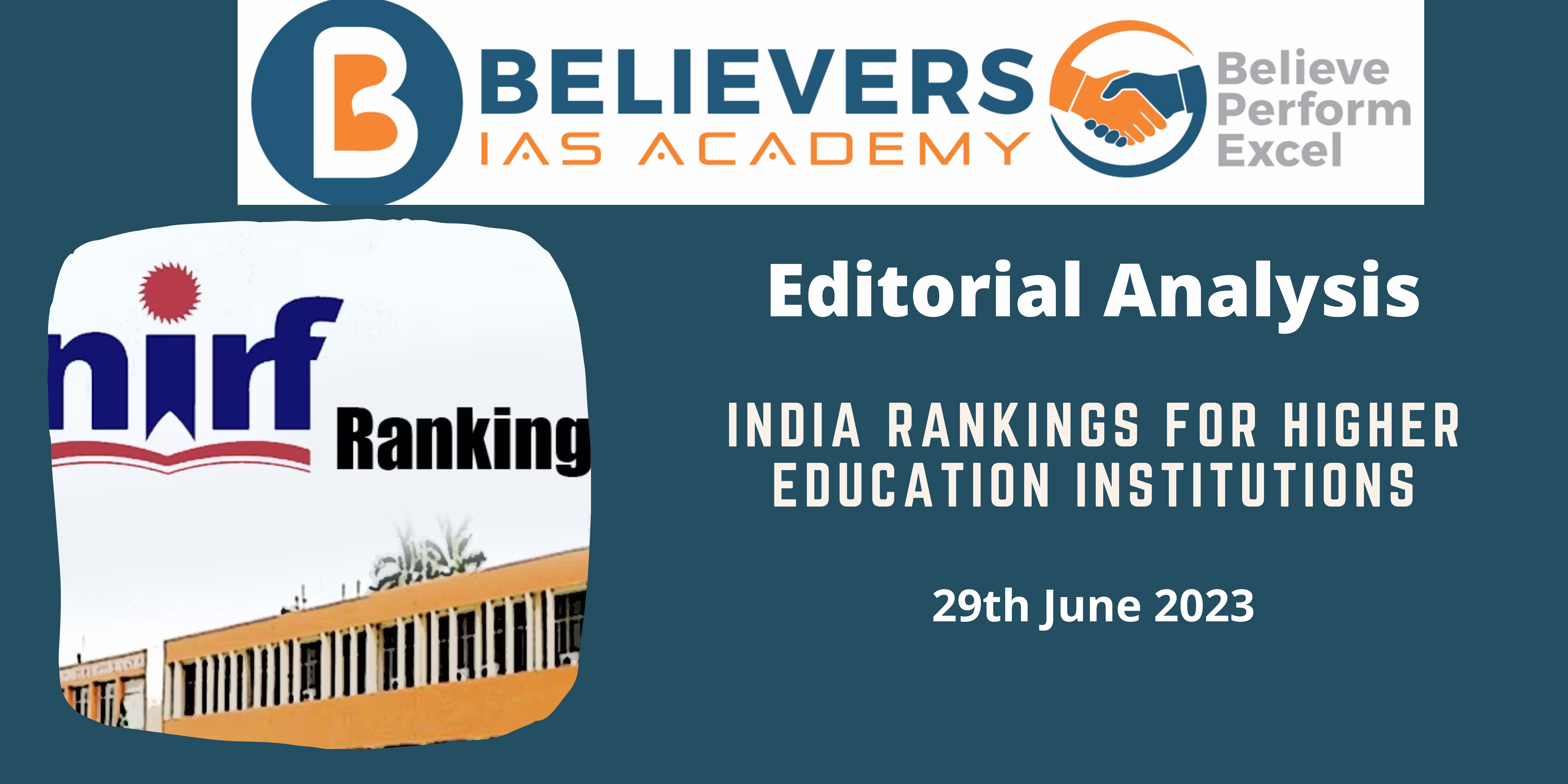India Rankings for Higher Education Institutions
Context:
The recently released India Rankings for 2023 by the National Institutional Ranking Framework (NIRF) has sparked discussions about the state of higher education institutions in the country. While the rankings serve as a benchmark, there are certain issues that need careful consideration.
Relevance:
GS-02 (Education, Government Policies & Intervention)
Prelims:
- NIRF Ranking, 2023
Mains Questions:
- Examine the incongruence between quantity and quality in the ranking of colleges and the need for a mission to improve quality across the country. (150 words)
Dimensions of the Article:
- Issue of Participation and Urban Bias
- Quantity versus Quality
- Quality Differences between Private and Government Institutions
- Faculty Strength and Rankings
- Scientific Publications and Research Investment
Issue of Participation and Urban Bias
- The participation of higher education institutions in the NIRF rankings raises concerns about the overall representation and transparency. Out of the numerous universities and colleges in India, only 12.3% took part in the ranking process.
- This lack of information about the parameters for the remaining 87.7% of institutions is troubling, especially for a country aspiring to leverage its demographic advantages. Moreover, the ranking framework seems to exhibit an inherent urban bias, further highlighted by the limited presence of colleges from rural areas.
Quantity versus Quality
- The distribution of top-ranked colleges showcases a significant concentration in certain states, namely Tamil Nadu, Delhi, and Kerala. The absence of any college from Uttar Pradesh, despite it having the highest number of colleges in the country, raises questions about the quality disparities across states.
- To address this issue, both the central and state governments should allocate substantial funds to improve the overall quality of education across the country.
Quality Differences between Private and Government Institutions
- A noticeable disparity exists between private and government institutions in terms of rankings.
- Private institutions struggle to secure top ranks, indicating the need for enhancing their quality.
- Additionally, there is immense potential for more state universities to feature prominently in the rankings, which can significantly benefit students in rural areas.
Faculty Strength and Rankings
- The correlation between faculty strength and rankings is evident when comparing the top 100 universities with the remaining institutions. The number of faculty members in the top 100 universities far exceeds that of the remaining universities.
- Similarly, colleges in the top 100 list boast a higher average number of faculty members. It is crucial to recognize that quality education cannot solely rely on infrastructure but also depends on qualified and adequate faculty.
- Non-compliance with prescribed faculty-student ratios, especially in engineering institutions, further highlights the need for improvement.
Scientific Publications and Research Investment
- Faculty strength and quality are also reflected in the volume of scientific publications. The majority of scholarly output in India comes from the institutions that participated in the rankings, indicating a concentration of research efforts. However, there is a significant discrepancy in scientific publications across disciplines, with management institutions showing alarmingly low publication rates.
- To enhance the overall quality of higher education, substantial financial resources, similar to those invested by countries like China, are required. India’s share in global scientific publications remains relatively low, and increased research investments are necessary to bridge this gap.
Way Forward:
To address the challenges highlighted by the rankings, a multi-pronged approach is necessary.
- Efforts should be made to increase the participation of institutions, especially from rural areas, to ensure a fair representation.
- A mission to improve quality across states must be launched, with adequate funding from both central and state budgets.
- Investments should focus on enhancing faculty strength and complying with faculty-student ratios.
- A significant increase in research funding is essential to boost India’s share in global scientific publications.
Conclusion:
The India Rankings for Higher Education Institutions provide valuable insights into the state of education in the country. However, they also shed light on critical issues that demand immediate attention. Bridging the participation gap, addressing the disparity between quantity and quality, and investing in faculty strength and research are essential steps to enhance the overall quality of higher education in India. By implementing these measures, India can unlock its full potential and establish itself as a global leader in education.




